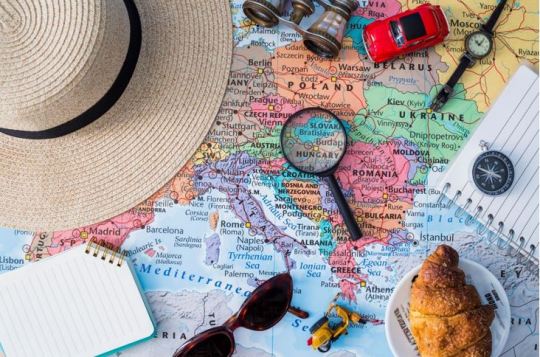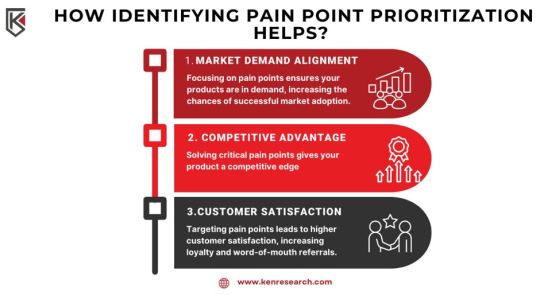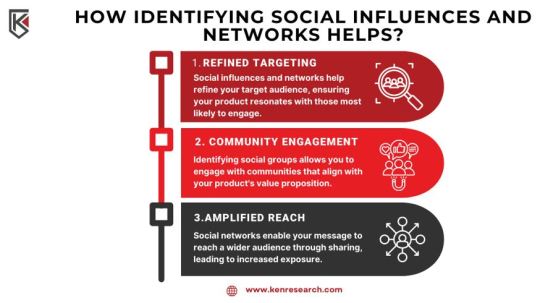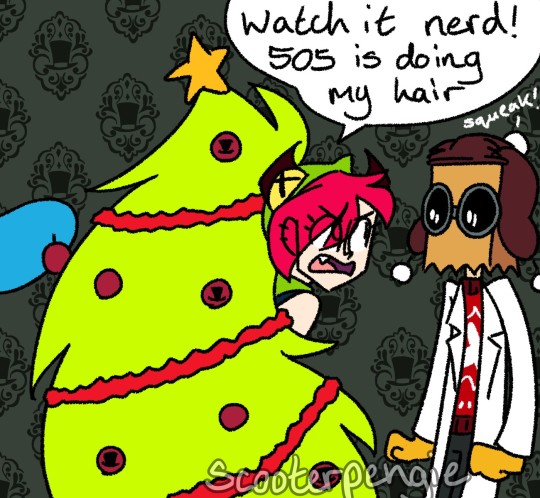#ken research
Explore tagged Tumblr posts
Text
Tourism Market: Trends, Growth, and Industry Players
Introduction
The global tourism market is a dynamic sector that continually evolves in response to changing consumer preferences, technological advancements, and global events. As we delve into the current landscape, it is crucial to explore the tourism market size, growth patterns, industry trends, and key players that shape the sector's trajectory.
Tourism Market Size and Growth
The tourism market has witnessed remarkable growth over the past decade. According to the latest data the global international tourist arrivals reached 1.5 billion in 2022, marking a 4% increase from the previous year. The tourism industry's robust growth is attributed to factors such as increased disposable income, improved connectivity, and a growing middle class in emerging economies.

The COVID-19 pandemic, however, significantly impacted the industry in 2020 and 2021. International tourist arrivals plummeted by 74% in 2020, representing the largest decline in the industry's history. As the world recovers from the pandemic, tourism is experiencing a resurgence. The UNWTO estimates that international tourist arrivals will surpass pre-pandemic levels by 2023, emphasizing the sector's resilience.
Tourism and Hospitality Industry Trends
The tourism and hospitality industry is undergoing transformative changes driven by technological advancements and shifting consumer behaviors. One notable trend is the rise of sustainable tourism. Travelers are increasingly prioritizing destinations and businesses that adopt eco-friendly practices. Hotels, airlines, and tour operators are responding by implementing sustainable initiatives to meet the demands of environmentally conscious travelers.
Another trend shaping the industry is the integration of technology. From mobile apps for seamless bookings to virtual reality experiences, technology is enhancing the overall travel experience. The use of artificial intelligence and big data analytics is also becoming prevalent, enabling businesses to personalize services, predict consumer preferences, and optimize operations.
Tourism Industry Players
The tourism market is comprised of a diverse range of players, including governments, international organizations, tour operators, airlines, hotels, and online travel agencies (OTAs). Notable industry players such as Airbnb, Expedia, and Booking. com have disrupted traditional hospitality models, offering travelers a wide array of accommodation options and personalized experiences.
Governments play a crucial role in shaping the tourism landscape through policies, infrastructure development, and destination marketing. Collaborations between public and private sectors are essential to foster sustainable growth and address challenges such as over-tourism and environmental impact.

Tourism Market Analysis
A comprehensive analysis of the tourism market involves assessing key factors such as market dynamics, competitive landscape, and regulatory environments. The Asia-Pacific region has emerged as a powerhouse in the tourism sector, with countries like China, India, and Japan experiencing substantial growth. In contrast, established destinations in Europe and North America continue to attract millions of tourists annually.
The post-pandemic recovery has prompted a shift in travel preferences, with a surge in demand for domestic and outdoor experiences. Travelers are seeking off-the-beaten-path destinations, contributing to the diversification of the tourism market.
Travel and Tourism Industry Outlook
Looking ahead, the outlook for the travel and tourism industry is optimistic. The industry is expected to rebound strongly, driven by pent-up demand, increased vaccination rates, and the easing of travel restrictions. The global tourism market is projected to reach $11.38 trillion by 2027, growing at a CAGR of 6.1% from 2020 to 2027.
In conclusion, the tourism market is a vibrant and resilient sector that continues to adapt to changing circumstances. Understanding the market size, growth trends, industry players, and emerging dynamics is crucial for stakeholders navigating the evolving landscape. As the world reopens for travel, the industry's ability to innovate and embrace sustainable practices will play a pivotal role in shaping its future success.
#market research#business#ken research#market analysis#market report#market research report#travel and tourism sector#travel and tourism market#travel and tourism industry#tourism sector#tourism market trends#tourism market size#tourism market players#tourism market forecast
2 notes
·
View notes
Text
0 notes
Text
Flavors & Fragrances Market Trends and Growth: Insights and Projections
As a market researcher, I have been closely monitoring the trends and growth dynamics of the global flavors and fragrances market. This industry has witnessed significant transformations, driven by evolving consumer preferences, the rise of natural and sustainable ingredients, and the increasing demand for personalized and innovative products. In this blog, I will delve into the key trends, growth drivers, and future projections to provide valuable insights to stakeholders.

Key Trends and Growth Drivers
Natural and Clean-Label Ingredients
Consumers are increasingly seeking out products that are formulated with natural, organic, and clean-label ingredients. This trend is driven by the growing awareness of the potential health and environmental impact of synthetic chemicals, as well as the desire for more transparent and sustainable product offerings.
Premiumization and Personalization
The flavors and fragrances market has experienced a shift towards premiumization, with consumers willing to pay a higher price for high-quality, specialized, and customized products. This trend is particularly evident in the fine fragrance and premium food and beverage segments, where consumers seek out unique and exclusive scents and flavor profiles.
Sustainability and Environmental Consciousness
Consumers are increasingly concerned about the environmental impact of the products they purchase, leading to a growing demand for sustainable and eco-friendly flavors and fragrances. Brands are responding by implementing green manufacturing practices, using renewable and biodegradable materials, and developing products that align with the principles of the circular economy.
Multifunctional and Innovative Products
The market has witnessed the introduction of multifunctional and innovative products that cater to the evolving needs and preferences of consumers. This includes the development of fragrances with added benefits, such as mood-enhancing or stress-relieving properties, as well as the integration of flavors and fragrances into a wider range of consumer goods, from personal care to home care products.
Market Segmentation and Growth
The global flavors and fragrances market can be segmented based on various factors, including product type, application, and geography.
Product Type
The market is dominated by the fragrance segment, which includes fine fragrances, personal care fragrances, and household fragrances. The flavors segment, which encompasses food and beverage flavorings, is also experiencing significant growth, driven by the demand for innovative and customized taste profiles.
Application
The flavors and fragrances market serves a wide range of industries, including food and beverage, personal care, home care, and fine fragrance. The personal care and home care segments are expected to witness the fastest growth, driven by the increasing demand for scented products and the rising popularity of multifunctional offerings.
Geography
The Asia-Pacific region is expected to be the fastest-growing market, driven by the rising disposable incomes, the growing middle-class population, and the increasing adoption of Western-style consumer goods. North America and Europe remain the dominant regions, with well-established flavors and fragrances industries.
Future Trends and Projections
Market Size and Growth
The global flavors and fragrances market is expected to grow from $31.6 billion in 2023 to $41.8 billion by 2028, at a CAGR of 5.7% during the forecast period. This growth is driven by the increasing demand for natural and sustainable ingredients, the rise of premiumization and personalization, and the introduction of innovative and multifunctional products.
Product Innovations
The market is expected to witness the introduction of innovative products, such as plant-based and upcycled flavors, fragrances with added functional benefits, and personalized scent-creation experiences. These advancements will cater to the evolving preferences of health-conscious and environmentally conscious consumers.
Digitalization and E-commerce
The flavors and fragrances industry is expected to embrace digital transformation, with the integration of technologies like artificial intelligence and augmented reality to enhance the consumer experience. The growth of e-commerce platforms will also play a significant role in the distribution and accessibility of these products.
Mergers and Acquisitions
The market is likely to see an increase in mergers and acquisitions, as larger players seek to expand their product portfolios, gain access to new markets, and leverage synergies to enhance their competitive position.
Conclusion
The global flavors and fragrances market is poised for significant growth, driven by the increasing demand for natural and sustainable ingredients, the rise of premiumization and personalization, the growing emphasis on sustainability and environmental consciousness, and the introduction of innovative and multifunctional products. Key trends include the preference for clean-label and natural ingredients, the desire for unique and exclusive scents and flavor profiles, the focus on eco-friendly and sustainable practices, and the development of products that cater to the evolving needs and preferences of consumers. Regional insights highlight the dominant role of the Asia-Pacific region, as well as the continued importance of North America and Europe. As the market continues to evolve, it is crucial for stakeholders to stay updated on the latest trends and projections to refine their marketing strategies and capitalize on the growth opportunities.
#Flavors and fragrance market#Maket analysis#Market research#Market Overview#Market insights#ken Research
0 notes
Text
Insights and Projections of Baby Food Market Trends and Growth
As a market researcher, I have been closely monitoring the trends and growth dynamics of the global baby food market. This industry has witnessed significant transformations, driven by evolving consumer preferences, technological advancements, and shifting demographic patterns. In this blog, I will delve into the key trends, growth drivers, and future projections to provide valuable insights to stakeholders.
Key Trends and Growth Drivers
Rising Demand for Natural and Organic Baby Food
Parents are increasingly prioritizing the health and well-being of their children, leading to a surge in demand for natural and organic baby food products. These products are perceived as safer, more nutritious, and free from synthetic additives, hormones, and genetically modified ingredients. This trend is further amplified by the growing awareness of the potential health benefits associated with organic food consumption.
Increasing Presence of Women in the Workforce
The rising number of working mothers has contributed to the growing demand for convenient and nutritious baby food options. As women juggle professional and family responsibilities, the need for time-saving and easy-to-prepare baby food solutions has become more pronounced. This trend is expected to continue, driving the expansion of the baby food market.
Technological Advancements and Product Innovations
The baby food industry has witnessed a wave of technological advancements and product innovations, catering to the evolving needs of parents. This includes the development of smart packaging, the incorporation of sustainable materials, and the introduction of specialized formulas tailored to address specific dietary requirements, such as allergies and intolerances.
Market Segmentation and Growth
The global baby food market can be segmented based on various factors, including product type, distribution channel, and age group.
Product Type
The market is dominated by the prepared baby food segment, which includes purees, cereals, and other ready-to-eat options. The dried baby food and infant milk formula categories are also experiencing significant growth, driven by the convenience and nutritional benefits they offer.
Distribution Channel
The baby food market is primarily driven by the supermarket hypermarket segment, as these channels provide a wide range of product options and convenient shopping experiences for parents. However, the online retail segment is gaining traction, offering the convenience of e-commerce and the ability to cater to specific dietary preferences.
Age Group
The baby food market caters to different age groups, with the 1-3 years segment accounting for the largest share. This age group requires specialized nutrition to support their rapid growth and development.
Regional Insights
Asia-Pacific
The Asia-Pacific region is expected to dominate the global baby food market, driven by the rising population, increasing urbanization, and the growing middle-class demographic. Countries like China, India, and Japan are witnessing a surge in demand for baby food products, particularly organic and premium offerings.
Europe
Europe is also a significant player in the global baby food market, with a strong focus on clean-label and sustainable products. The region's emphasis on environmental consciousness and health-conscious consumer behavior is shaping the growth trajectory of the industry.
Future Trends and Projections
Market Size and Growth
The global baby food market size is expected to grow from $102.90 billion in 2023 to $185.47 billion by 2032, exhibiting a CAGR of 6.87% during the forecast period. This growth is driven by the rising population, the increasing presence of women in the workforce, and the growing demand for natural and organic baby food options.
Product Innovations
The baby food market is expected to witness the introduction of innovative products, such as plant-based formulas, personalized nutrition solutions, and sustainable packaging options. These advancements will cater to the evolving preferences of health-conscious parents and address environmental concerns.
Sustainability and Environmental Consciousness
The baby food industry is expected to place greater emphasis on sustainability and environmental responsibility. Manufacturers will focus on developing eco-friendly packaging, sourcing sustainable ingredients, and implementing sustainable production practices to align with the growing consumer demand for environmentally conscious products.
Conclusion
The global baby food market is poised for significant growth, driven by the rising demand for natural and organic products, the increasing presence of women in the workforce, and the ongoing technological advancements and product innovations. Key trends include the growing preference for natural and organic baby food, the increasing presence of women in the workforce, and the focus on technological advancements and product innovations. Regional insights highlight the dominant role of the Asia-Pacific region in the global market. As the market continues to evolve, it is crucial for stakeholders to stay updated on the latest trends and projections to refine their marketing strategies and capitalize on the growth opportunities.
0 notes
Text
Bicycle Market Research Report: Insights into Market Size, Trends, and Major Players
The bicycle market has witnessed significant growth in recent years, driven by an increase in people choosing bicycling for leisure and exercise, and the rising popularity of dockless bicycle-sharing systems, especially in Asian countries. This market research report provides an in-depth analysis of the global bicycle market, highlighting its size, trends, major players, and segmentation.

Bicycle Market Size and Growth
The global bicycle market size was valued at USD 70,497.5 million in 2023 and is expected to expand at a compound annual growth rate (CAGR) of 9.7% from 2022 to 2030, reaching USD 135.02 billion by 2030. This growth is attributed to the increasing adoption of cycles as a form of leisure activity, and a high preference for bicycles as a convenient form of exercise to ensure a healthy life.
Market Trends and Demand
Several trends are driving the growth of the bicycle market. One notable trend is the increasing demand for e-bicycles. E-bicycles are gaining popularity due to their ease of use and environmental benefits. Another significant trend is the growing popularity of dockless bicycle-sharing systems, which are convenient and cost-effective for short trips.
Bicycle Market Major Players
The bicycle market is dominated by several major players, including:
Accell Group: A leading global player in the bicycle industry, known for its high-quality bicycles and accessories.
Dorel Industries Inc.: A global player in the bicycle industry, known for its wide range of bicycles and accessories.
Avon Cycles Ltd.: A UK-based company that specializes in the design and manufacture of bicycles and accessories.
Giant Bicycles: A Taiwanese company that is known for its high-performance bicycles and accessories.
Merida Industry Co., Ltd: A Taiwanese company that specializes in the design and manufacture of bicycles and accessories.
Market Segmentation
The bicycle market is segmented based on product, design, technology, end-user, and distribution channel.
Product:
Mountain Bikes: Designed for off-road riding, these bicycles are popular among adventure seekers.
Hybrid Bikes: A combination of road and mountain bikes, these bicycles are suitable for both on-road and off-road riding.
Road Bikes: Designed for speed and efficiency, these bicycles are popular among professional cyclists.
Cargo Bikes: Designed for carrying heavy loads, these bicycles are popular among commuters and delivery services.
Others: This segment includes other types of bicycles, such as folding bikes and electric bikes.
Design:
Folding: Designed to be compact and portable, these bicycles are popular among commuters.
Regular: Designed for everyday use, these bicycles are popular among recreational riders.
Technology:
Electric: Powered by electric motors, these bicycles are popular among those who want a more efficient and environmentally friendly option.
Conventional: Powered by human effort, these bicycles are popular among those who want a more traditional and cost-effective option.
End-user:
Men: Bicycles designed for men, including road bikes and mountain bikes.
Women: Bicycles designed for women, including hybrid bikes and cargo bikes.
Kids: Bicycles designed for children, including children's bicycles and scooters.
Distribution Channel:
Online: Online retailers, such as Amazon and REI, offer a wide range of bicycles and accessories.
Offline: Brick-and-mortar stores, such as bike shops and department stores, offer a wide range of bicycles and accessories.
Conclusion
The global bicycle market is poised for significant expansion, driven by an increase in people choosing bicycling for leisure and exercise, and the rising popularity of dockless bicycle-sharing systems, especially in Asian countries. Major players in the market are focusing on innovation, technology, and sustainability to stay ahead of the competition. The market is segmented based on product, design, technology, end-user, and distribution channel, with e-bicycles and hybrid bikes being the largest segments. As the market continues to evolve, it is expected that new players will enter the market, and existing ones will expand their product lines to cater to the changing needs of consumers worldwide.
#bicycle market#bicycle market players#bicycle market insights#bicycle market size#bicycle market research#research report#ken research
0 notes
Text
Digitalization, Personalization, Affordability: Shaping the Future of Home Loans Market

The home loan industry stands as a critical pillar of the global economy, enabling individuals and families to achieve the dream of homeownership. This dynamic sector, fueled by rising urbanization and increasing disposable incomes, is witnessing exciting growth prospects across the globe. In this blog, we, as market research experts, delve into the intricacies of the home loan market, explore key trends and insights, and unveil emerging opportunities for stakeholders.
Home Loan Market: A Global Overview
The global home loan market is estimated to reach a staggering USD 52.1 trillion by 2027, with a projected CAGR of 5.3% during the forecast period (2022-2027). This growth is driven by several factors:
Rising demand for housing: Increasing urbanization and population growth, particularly in emerging economies, are creating a high demand for housing, fueling the need for home loans.
Favorable interest rates: Lower interest rates, implemented by central banks to stimulate economic activity, are making home loans more affordable and accessible to a wider population.
Government initiatives: Many governments are launching initiatives to promote homeownership, such as tax breaks, subsidies, and easier loan approval processes, further bolstering market growth.
Home Loan Market Share: Understanding the Players
The market share of the home loan industry is fragmented, with various players vying for a piece of the pie:
Commercial banks: These institutions hold a dominant share of the market, offering a wide range of home loan products with competitive rates and terms.
Non-banking financial institutions (NBFCs): NBFCs are playing an increasingly significant role, particularly in underbanked and rural regions, by providing flexible home loan options.
Fintech companies: Fintech companies are emerging as disruptive forces in the industry, offering technology-driven solutions and streamlined loan approval processes.
Home Equity Lending Market: A Lucrative Segment
The home equity lending market, a segment within the broader home loan landscape, is witnessing tremendous growth. This segment caters to homeowners seeking to leverage the equity built up in their properties for various purposes, such as:
Home improvement: Financing renovations and upgrades
Debt consolidation: Combining multiple debts into a single, lower-interest loan
Education expenses: Funding educational pursuits for themselves or family members
Key Trends Shaping the Future
Several key trends are shaping the future of the home loan industry:
Digitalization: The adoption of digital technologies is transforming the landscape, enabling online applications, faster processing times, and enhanced customer experience.
Personalization: Lenders are increasingly offering personalized loan products and interest rates based on individual borrowers' financial profiles and needs.
Focus on affordability: With rising housing costs, lenders are developing innovative solutions to make homeownership more accessible, such as adjustable-rate mortgages (ARMs) and down payment assistance programs.
Opportunities for Stakeholders
The home loan industry presents exciting opportunities for various stakeholders:
Lenders: By embracing digitalization, offering competitive rates and terms, and catering to niche markets, lenders can expand their customer base and market share.
Technology providers: Developing innovative platforms and solutions that streamline loan processes and enhance user experience can unlock new opportunities in the market.
Regulatory bodies: By creating a stable and transparent regulatory environment, they can foster healthy competition and protect consumer interests.
Conclusion
The home loan industry plays a crucial role in enabling homeownership, a cornerstone of financial stability and societal well-being. By embracing technological advancements, fostering innovation, and prioritizing responsible lending practices, stakeholders can contribute to a sustainable future for the home loan market, allowing individuals and families around the world to realize their dreams of owning a home.
#home loan market#home loan industry#home loans market#home loan market share#home equity lending market#ken research#business
0 notes
Text
A Strategic Guide for Sustainable Success in Vietnam’s Corporate Training Market
A Strategic Guide for Sustainable Success in Vietnam’s Corporate Training Market

In the vibrant landscape of Vietnam’s corporate education, where talent development plays a pivotal role, we delve into key trends, challenges and opportunities. This analysis is based on insights gathered from the comprehensive “Vietnam Corporate Training Market Outlook to 2028” report by Ken Research.
Market Overview
The Vietnam Corporate Training Market stands as a testament to the nation’s competitive spirit and growth potential. With a focus on fostering talent, the market has witnessed the emergence of innovative approaches like Blended Learning and tailored training courses. The total addressable market, coupled with government initiatives promoting vocational training, paints a promising picture for the future.
Key Market Trends
Growth Trends
From 2017 to 2022, the Vietnam Corporate Training Market has exhibited robust growth. This period has seen a significant influence from e-learning and self-paced learning platforms, reshaping how training is delivered. The market has embraced diverse training modes, including Classroom Training, Workshops, Seminars and On-site Training.
Major Players
Key players such as Pace, E&G and CTS Corporate Training Solutions have played instrumental roles. Their contributions underscore the dynamic nature of the market and its adaptability to changing educational landscapes.
Market Analysis by Industries and Organization Size

Dominance of Industries
The Manufacturing and Financial Services sectors have dominated the corporate training market. The CAGR of 6.4% (2017 to 2022) reflects the industry’s resilience and adaptability. Offline training modes, particularly Classroom Training and Workshops, have remained prevalent.
Projections for the Future
Projections suggest a CAGR of 7.6% from 2022 to 2028, with a special focus on Small and Medium Enterprises and Manufacturing Industries. This anticipates a period of sustained growth and innovation.
Key Trends by Market Segment
Tailoring Training
Corporate training trends are intricately tied to organization size. Small and Medium Enterprises, constituting 96% of businesses, face unique challenges and growth opportunities. The northern region, with its concentration of diverse sectors, plays a crucial role in shaping corporate education trends.
Competitive Landscape
Business Models
B2B business models dominate, offering Leadership and English Communication Courses as popular training products. The competitive landscape showcases a diversified portfolio of training programs. Focus on Human Resource Management Courses and plans for integrating advanced technologies signal a commitment to holistic talent development.
Recent Developments
Industry Initiatives
Recent webinars and conferences by industry leaders, including LHH and PACE, underscore a commitment to knowledge-sharing. Training programs and workshops conducted by E&G Training and ITD Vietnam highlight the industry’s dedication to staying at the forefront of educational innovation.
Future Outlook

Projected Growth
The growth is propelled by a rising middle class and the increasing influence of online platforms. The Vietnam Corporate Training Market Growth anticipates a CAGR of 7.6% between 2022 and 2028. A shift towards Virtual Classroom Training and a heightened emphasis on Digital Skills are on the horizon.
Technological Impact
Technologies like Augmented & Virtual Reality, along with the Metaverse, stand poised to redefine the learning experience. The future landscape will also witness a focus on employee well-being and mental health integration into training programs.
Conclusion
The Vietnam Corporate Education Market is a dynamic ecosystem nurturing talent and driving growth. The trends, challenges and opportunities discussed here form a roadmap for businesses and individuals seeking to thrive in this ever-evolving landscape.
FAQs (Frequently Asked Questions)
Q1 How fast is the Vietnam Corporate Training Market growing?
Answer: The market has grown at a CAGR of 6.4% from 2017 to 2022 and is projected to expand further at a CAGR of 7.6% from 2022 to 2028.
Q2 What industries dominate the corporate training market in Vietnam?
Answer: The Manufacturing and Financial Services industries have a significant presence in the corporate training market.
Q3 What are the key training modes adopted in Vietnam?
Answer: Training modes include Classroom Training, Workshops, Seminars and On-site Training, catering to diverse learning needs.
Q4 Who are the major players in the Vietnam Corporate Training Market?
Answer: Major players include Pace, E&G and CTS Corporate Training Solutions, contributing to the competitive and innovative landscape.
Q5 What is the future outlook for the Vietnam Corporate Training Market?
Answer: The market anticipates a CAGR of 7.6% between 2022 and 2028, driven by factors like a rising middle class, online platforms and a shift towards Virtual Classroom Training.
#corporate education market#corporate training market#corporate learning market#Vietnam Corporate Training Market#Ken Research
0 notes
Text

Paperhatober Day 12: Ghost
#I had NO idea for this one#so I was gonna take it by the literal definition but I struggled with that#and then I researched my attachment style and came across the word “ghosting” and had an epiphany#dw Flug I think he just doesn't know how to reply without breaking the tablet again!#I hope that's what it is...#villainous#villanos#vilanesco#dr flug#flug#kenning flugslys#black hat#paperhat#villainous flug#villainous dr flug#villainous black hat#paperhatober#cartoon#fanart#my art
482 notes
·
View notes
Photo

44 notes
·
View notes
Text
WHY isn't a Ferrocell in EVERY science class to show WHAT magnetism truly is & the important Phi-llotaxis geometry it represents as it's seen in nature ALL around us?
The occult cabal that controls these Fields DON'T want us to know & understand WHAT magnetism, Electricity, FREQUENCY & Light truly is & how these things relate to our HEALTH!
WEAPONIZED against us to make us sick, make $ off us for 'Treatment' & keep us WEAK to prevent us from reaching our true potential intended for us by God.
[They] are obsessed with God's elements of creation that build the universe. The symbols [They] stole, represent these ingredients.
Those ingredients were also used to construct all of you.
"Gravity" / Electro-static acceleration -> magnetic attraction <- static electricity, electricity, DNA, Light are ALL the same, just different pressure & torsion modalities. Like ice & steam is still WATER." - - Ken Wheeler
Recognize this pattern anywhere?
It's only seen EVERYWHERE in nature, and as a result, mimicked in occult symbolism & logos of cabal corporations.
"Magnetism" is responsible for 100% of the visible universe.
Ken Wheeler, You can find him on YouTube 🤔
#pay attention#educate yourselves#educate yourself#knowledge is power#reeducate yourself#reeducate yourselves#think about it#think for yourselves#think for yourself#do your homework#do some research#do your own research#ask yourself questions#question everything#ken wheeler#you tube#you decide#magnetism#energy
81 notes
·
View notes
Text
Hey guys! I'm doing some research for a fic, so I'm looking for any help i can get about the deaf/hard of hearing community! Please shoot me a message if you are/have experience with this <3
31 notes
·
View notes
Text
5 Tips to Identify the Perfect Customer Cohorts for Your New Product Line: Ken Research
It is always an exciting journey for any brand to launch a new product line. But knowing your audience inside out is one of the critical aspects of success. By pointing to the right cohorts of your targeted consumer, you can tailor your marketing efforts and product features that resonate with your consumers. So, how can you identify those cohorts? Here is a list of 5 ways that can enable you to tap perfect customer cohorts for your new product line.
1. Data-Driven Demographics:
To identify the segments that align with your product line, begin with demographics. Determine the age, gender, location, income, and education of your targeted consumer.

For example, Apple identified a cohort that focused on a more budget-friendly iPhone option without compromising performance. So, they introduced the iPhone SE that targeted individuals who look for the latest technology in a smaller affordable package. That’s how Apple catered to a specific segment of the market after understanding this cohort’s preference for a compact and cost-effective device.
2. Psychographic Profiling:
Demographics are important but if you want to flourish in the market, it is not enough. You need to delve into psychographics- the attitudes, values, and lifestyle choices of your potential consumers.

Lululemon, the activewear brand that is known for its premium women’s activewear, diversified its product line to include men's activewear as well. It is because they recognized the rising cohort of health-concern males seeking stylish yet comfortable workout apparel. That’s how Lululemon tapped into a previously underserved segment, and capitalized it.
3. Behavioral Patterns:
The third comes to behavioral patterns. It is another important way to determine the right cohort. Examine consumer behavior to unleash some actionable insights. Just like Beyond Meat did.

Beyond Meat analyzed a cohort of environmentally and health-conscious individuals who were looking for alternatives to traditional meat. That’s when they launched plant-based burgers that replicate the exact taste and texture of meat. This also addressed sustainability and health which became one of the attributes behind the success of Beyond Meat. They wonderfully created a product line that served the requirement for ethical and nutritious food options.
4. Pain Point Prioritization:
Addressing the pain point of your customer and offering them the right solution is the best way to thrive in the market. Hence, identify the issues or challenges that your services or products can resolve just like Peloton did.

Wish to know the pain points of your consumers? Book a free discovery call with Market experts
It recognized a cohort of fitness enthusiasts who seek a convenient and engaging place for workouts and that’s it. Peloton launched a wide range of connected exercise equipment and online classes that cater to consumers who prefer personalized fitness experiences from the comfort of their homes. This resulted in the rapid growth and success of the brand.
However, not everyone gets lucky in tapping the whitespaces in the market. That’s why over 500+ CXOs chose Ken Research to enable them to identify the consumer’s challenges and make a successful business by offering solutions to those issues.
Do you also wish to determine the pain points of your targeted consumers and build a thriving business? Visit the website now or fill in the details to receive a Free 30 minutes of call with Ken Consultants today.
5. Social Influences and Networks:
While you are trying to find out cohorts, it’s important to consider the social dynamics that may influence your key audience or clients.

Casper an e-commerce company that sells sleep products online and in retail locations, spotted a cohort of young adults, especially millennials who appreciated convenience and a seamless online shopping experience. And there they disrupted the whole mattress industry by launching memory foam mattresses in a compact box and leveraging a direct-to-customer model. This helped Casper gain a strong foothold in the market simply by offering this cohort’s preferences for hassle-free purchasing.
To sum it all up, understanding your consumer cohorts is an excellent way for launching a successful new product line. Several brands have demonstrated the impact of applying these strategies in various contexts and you can do it. Just make use of data, understand psychographics, focus on customer behaviors, address their pain points, and not to forget, consider their social dynamics. Doing this will surely help you tailor your strategy to resonate with a specific group and make a significant business impact. In case, you need some consumer data to back your business strategy, consider Ken research to get some authentic customer insights. Visit the website now.
2 notes
·
View notes
Text
#Indonesia market#Indonesia industry#Market research#market analysis#Market overview#Aircraft MRO Market#Market report#Ken research
0 notes
Text
Personal Accessories Market: Trends, Players, and Growth Opportunities
The personal accessories market has witnessed significant growth in recent years, driven by the increasing demand for stylish and functional products. This blog provides an in-depth analysis of the market size, share, and growth, as well as the key trends and players shaping the industry.

Personal Accessories Market Size and Growth
The global personal accessories market was valued at USD 1.34 trillion in 2022 and is expected to grow at a compound annual growth rate (CAGR) of 5.1% during the forecast period, reaching USD 1.83 trillion by 2028. The market is expected to witness significant growth, driven by the increasing demand for premium and luxury products, the rise of e-commerce, and the growing popularity of personalized accessories.
Market Trends
Several trends are shaping the personal accessories market, including:
Personalization: The trend towards personalization is driving the demand for customized accessories, such as monogrammed handbags and engraved jewelry.
Sustainability: Consumers are increasingly concerned about the environmental impact of their purchases, leading to a growing demand for eco-friendly and sustainable accessories.
Digitalization: The rise of e-commerce and social media has transformed the way consumers discover and purchase accessories, with online platforms becoming increasingly important for retailers.
Innovative Materials: The use of innovative materials, such as recycled plastics and sustainable fabrics, is becoming more prevalent in the industry.
Experiential Shopping: The trend towards experiential shopping is driving the demand for immersive and engaging retail experiences, with accessories retailers investing in interactive displays and events.
Market Players
The personal accessories market is dominated by several key players, including:
Tiffany & Co.: Tiffany & Co. is a leading luxury jewelry brand, offering a range of high-end accessories including handbags, watches, and jewelry.
Coach: Coach is a well-known luxury accessories brand, offering a range of high-end handbags, wallets, and other accessories.
Michael Kors: Michael Kors is a popular luxury accessories brand, offering a range of high-end handbags, watches, and jewelry.
Fossil: Fossil is a well-known accessories brand, offering a range of affordable and stylish accessories including watches, handbags, and jewelry.
Kate Spade: Kate Spade is a popular accessories brand, offering a range of stylish and functional accessories including handbags, wallets, and jewelry.
Conclusion
The personal accessories market is expected to witness significant growth over the next few years, driven by the increasing demand for premium and luxury products, the rise of e-commerce, and the growing popularity of personalized accessories. The market is dominated by several key players, including Tiffany & Co., Coach, Michael Kors, Fossil, and Kate Spade. As the market continues to evolve, retailers must adapt to changing consumer preferences and technological advancements to remain competitive.
0 notes
Text


What do the Villainous characters want for Christmas?




I did a bunch of Xmas drawings for Villainous and I'm not really that happy with them but if I don't post them now I'll have to wait till next December 😑

#Villainous#villanos#dr flug#dr kenning flugslys#demencia#villainous demencia#black hat#Villainous black hat#505#Villainous 505#Villainous fanart#comics#my art#is the missile toad meme dead i still find it funny#the only thing i like in this is the bh 505 joke#i had to do actual research for flug's line#is it me or am i getting slightly better at drawing black Hat#it was fun drawing their holiday outfits though
118 notes
·
View notes
Text
The Sporting Goods Market Research Report
The sporting goods market is a dynamic and diverse sector within the retail industry, catering to the needs and preferences of athletes, fitness enthusiasts, and outdoor adventurers. In this comprehensive blog post, we will delve into the essential insights, trends, and major players shaping the sporting goods market, covering market size, share, growth, prevailing trends, and the key industry players driving innovation and excellence.
Sporting Market Size, Share, and Growth
The global sporting goods market size was valued at USD 180.5 billion in 2021 and is projected to reach USD 231.7 billion by 2026, growing at a CAGR of 5.1%. The market is driven by factors such as the increasing participation in sports and fitness activities, the rising awareness of health and wellness, and the growing demand for high-quality sporting equipment and apparel.
Market Trends
A notable trend in the sporting goods market is the emphasis on sustainability and eco-friendly products. Consumers are increasingly seeking sporting goods made from recycled materials, organic fabrics, and sustainable production practices. The global market for sustainable sporting goods is expected to witness significant growth, driven by the increasing preference for environmentally conscious and socially responsible products. Another significant trend is the rise of athleisure and multifunctional sports apparel. The fusion of fashion and function has led to the popularity of athleisure wear that can seamlessly transition from the gym to everyday activities. The market for versatile and stylish sports apparel is expanding, offering consumers a blend of performance and style in their activewear.
Sporting Goods Market Players
The sporting goods market is characterized by a diverse array of players, from established sports brands to emerging fitness startups and specialty retailers. Some of the major players in the market include:
Nike, Inc. (United States): A global leader in athletic footwear, apparel, and equipment, known for iconic brands like Nike, Jordan, and Converse.
Adidas AG (Germany): A prominent sports brand offering a wide range of athletic footwear, clothing, and accessories under the Adidas and Reebok labels.
Under Armour, Inc. (United States): A leading performance apparel brand specializing in sports clothing, footwear, and accessories for athletes and fitness enthusiasts.
Decathlon Group (France): A major sporting goods retailer offering a diverse range of products for over 80 sports, catering to athletes of all levels.
Puma SE (Germany): A global sports brand known for its athletic footwear, apparel, and accessories, with a focus on performance and style.
Conclusion
In conclusion, the sporting goods market is a vibrant and evolving industry, driven by the passion for sports, fitness, and outdoor activities. As the market continues to expand, brands and retailers that prioritize innovation, sustainability, and performance will lead the way in meeting the diverse needs and preferences of athletes and active individuals worldwide. With a focus on quality, style, and functionality, the sporting goods market is poised for continued growth and advancement in promoting an active and healthy lifestyle for consumers of all ages and interests.
0 notes